Photographs: Courtesy, High Museum of Art
Most of the design and technology breakthrough in the auto world is first showcased on concept cars. These cars may not see the light of the day but are always ahead of their time.
High Museum of Art in Atlanta has launched an exhibition of some of the sleekest and most futuristic cars ever designed.
Titled as ‘Dream Cars: Innovative Design, Visionary Ideas’, the exhibition showcases concept cars from the 1930s to the 21st century brought down from different parts of the globe.
Click NEXT to see the cars…
17 Sleekest and most futuristic cars ever designed
Image: Norman Timbs Special.Photographs: Courtesy, High Museum of Art
Norman Timbs Special, 1947
Mechanical engineer Norman Timbs created the Timbs Special for his personal use. A visually arresting automobile that epitomised grace and speed, the car articulated the ideas of streamlining and wind resistance with its elongated, curvilinear forms and seemingly single-piece body.
Timbs took more than two and a half years to complete the car, and it cost him around $10,000.
It had no doors and was composed of two hand-formed aluminium shapes.
This car graced the October 1949 cover of Motor Trend magazine, accompanied by a short article, "Home-Made Streamliner," a title that implied that anyone could make this car.
…
17 Sleekest and most futuristic cars ever designed
Image: Tasco.Photographs: Courtesy, High Museum of Art
Tasco, 1948
Designer and engineer Gordon Buehrig, famed for designing the Cord 810 and Duesenberg Model J in the 1930s, independently developed the design for the automobile known as the Tasco in 1948. The acronym stands for The American Sports Car Company (the car and company shared the same name).
The Tasco’s clever T-top roof design with removable panels was the first of its kind and, decades later, influenced the 1968 Corvette.
Visibility above and to both sides was excellent, much like sitting in a two-seater airplane. The instrument panel resembled an aircraft cockpit and was positioned high in front of the driver, with the steering wheel mounted close to it.
Although Buehrig viewed the Tasco as a failure because it never reached production, the innovations born through its development contributed greatly to the future of car design.
…
17 Sleekest and most futuristic cars ever designed
Image: Stout Scarab.Photographs: Courtesy, High Museum of Art
Stout Scarab, 1936
Designed by aviation and automotive pioneer William Bushnell Stout and hand-produced in single-digit numbers by Stout Motor Car Company, the Scarab was one man’s singular vision to move car design dramatically into the future.
The Scarab was inspired by nature, in particular the shape of the scarab beetle.
Stout's goal was to create a virtual living room on wheels.
This car was in essence a precursor to the minivan of today, but with convertible furniture.
The front passenger seat could rotate fully, the back seat became a couch, and a table folded out for playing cards or holding drinks.
Many of the car's features eventually were adopted on production cars. The legacy of the Scarab is the success of Stout's innovative ideas rather than the car itself.
…
17 Sleekest and most futuristic cars ever designed
Image: Edsel Ford Model 40 Special Speedster.Photographs: Courtesy, High Museum of Art
Edsel Ford Model 40 Special Speedster, 1934
In 1934 Edsel Ford, president of Ford Motor Company and son of Henry Ford, desired a sleek "Continental" car based on European styles he had seen during his travels abroad.
He asked Ford Motor Company’s styling chief Eugene ‘Bob’ Gregorie to help design what he envisioned.
Gregorie sketched a few alternatives and built a model, which he tested in a small wind tunnel. The bodywork followed the best aircraft practice, being light and very strong.
Custom touches included a shapely alligator-style hood with louvered side panels, the angle of which subtly matches that of the radiator grille; low-mounted headlights molded into the fenders; an enclosed radiator with a concealed cap; a starter button on the instrument panel; no running boards; and long, low proportions.
These features would not appear on any Ford Motor Company cars for many years, as both Ford and Gregorie considered them too radical for production.
Edsel Ford drove it as his personal Continental speedster, representing the new, sleek, streamlined look of the 1930s.
…
17 Sleekest and most futuristic cars ever designed
Image: Voisin C-25 Aerodyne.Photographs: Courtesy, High Museum of Art
Voisin C-25 Aerodyne, 1934
Pioneer French aeronautical engineer and automobile designer and maker Gabriel Voisin introduced his C-25 Aerodyne at the 1934 Paris Salon de l'Automobile car exposition.
His early success had come from designing cars with long, angular French, Moderne-inspired lines in the 1920s.
Voisin's cars epitomised modernism and luxury. He was not interested in bowing to popular aesthetics, particularly the American streamlined look of the late 1920s and early 1930s.
However, as the French automotive industry declined after the 1929 stock market crash and Voisin's own business struggled with bankruptcy, he decided to develop a new look.
…
17 Sleekest and most futuristic cars ever designed
Image: Chrysler Thunderbolt.Photographs: Courtesy, High Museum of Art
Chrysler Thunderbolt, 1941
After rushing its production to be ready for a grand debut at the October 1940 New York Auto Show, Chrysler confidently touted the Thunderbolt as ‘The Car of the Future,’ built to educate the public about aerodynamics and streamlining as ‘the source of modern, so-called functional styling.’.
It was heavily promoted as having been tested in a wind tunnel, which provided scientific studies of how the car's shape dealt with continuous airflow and led to refinements that minimised resistance.
It was the first American car to feature an electrically operated, retractable hardtop and disappearing headlights, which were controlled by push buttons on a leather-covered dashboard.
Eight Thunderbolts were planned but only five were built, of which four survive.
…
17 Sleekest and most futuristic cars ever designed
Image: Chrysler (Ghia) Streamline X 'Gilda'.Photographs: Courtesy, High Museum of Art
Chrysler (Ghia) Streamline X "Gilda," 1955
Chrysler partnered with the renowned Italian firm Carrozzeria Ghia to design a streamlined, wedged-shape automobile inspired by a small sculpture created by styling chief Virgil Exner, Sr.
The result was the 1955 Streamline "X," or - as its designer, Ghia technical director Giovanni Savonuzzi, nicknamed it - "Gilda".
Automotive styling was heavily influenced by jet aircraft and rocketry.
The completed "Gilda" illustrated the marriage of scientific aerodynamics with the aesthetics and styling of streamlining.
The "Gilda" debuted at the 1955 Salone dell'automobile di Torino (the Turin automobile show), where it was hailed as "shaped by the wind" and caused a sensation with its "experimental body."
The car went on to tour the European show circuit to great acclaim before it was shipped to the United States that October for permanent display at the Henry Ford Museum.
…
17 Sleekest and most futuristic cars ever designed
Image: The three-wheeled electric egg.Photographs: Courtesy, High Museum of Art
Paul Arzens L'Œuf electrique, 1942
The three-wheeled electric egg was created by French artist, industrial designer, and engineer Paul Arzens in 1942 as a unique car for his personal use during World War II.
As its name suggests, the car was shaped like an egg, and it served as a convenient urban mini-car in Paris.
Designed under the duress of the German occupation of the city, the car creatively responded to the period's shortages and rationing of petrol and other materials.
Equipped with only a single pedal and a steering wheel, this was a simple device that had a tremendous impact, including the distinction of being the world's first bubble car with its three-quarters Plexiglas dome enclosure.
It also signified the beginning of France's industry dominance in mini-cars following the war.
With the exception of crash safety considerations, by today's standards this car was a clever approach to low-cost, lightweight, fuel-efficient transportation, and was in many ways the precursor to the electric Smart Car of today.
…
17 Sleekest and most futuristic cars ever designed
Image: General Motors Le Sabre XP-8.Photographs: Courtesy, High Museum of Art
General Motors Le Sabre XP-8, 1951
After the close of World War II, General Motors needed a new head-turning car. Sketches began in 1946, and by 1951 the result was the Le Sabre XP-8, a dazzling, high-tech concept two-seater that looked unlike anything else on the road.
The fashionable tinted wraparound windshield became a distinctive GM feature in later production cars.
Advanced features included a rain sensor, which could activate the disappearing power top; electric jacks in all four corners; gullwing bumpers with protruding front bumper extensions; a panel full of aircraft-style instruments; electrically heated seats; and 12-volt electrics.
The Le Sabre XP-8 became Earl's new personal car as an appropriately visionary vehicle for the nation's leading automotive design chief.
…
17 Sleekest and most futuristic cars ever designed
Image: Cadillac Convertible Concept Car.Photographs: Courtesy, High Museum of Art
Cadillac Convertible Concept Car, 1951
This extremely rare rendering celebrates the 250th anniversary of the founding of Detroit by the French explorer Antoine de la Mothe Cadillac.
Carl Renner, a General Motors stylist for thirty-five years, caught the eye of Harley J. Earl, who in 1954 hired him for a special styling division to work on top secret concept cars for GM's Motorama.
Here Renner depicts a full-scale Cadillac convertible concept car racing through the city at night, with Detroit visible in the background.
The car resembles a 1950s version of Earl's legendary 1938 Y-Job with elements of the Centurion XP-301 and General Motors Le Sabre XP-8.
The dramatic image shows a cone-shaped red traffic light mirroring the shape of the Dagmars on the front bumper.
…
17 Sleekest and most futuristic cars ever designed
Image: BMW GINA Light Visionary Model.Photographs: Courtesy, High Museum of Art
BMW GINA Light Visionary Model, 2001
Designed by then chief of design Christopher Bangle, the BMW GINA Light Visionary Model is an example of a contemporary concept car that is extremely futuristic and signifies the growing consumer need for flexibility and customisation.
The name GINA refers to a philosophy meant not only to give designers and engineers creative freedom, but also to allow them to consider consumers' immediate needs and desires in dramatic new ways in both styling and function.
The GINA's shape could change through the use of flexible tensile fabric stretched over a moveable body frame of aluminium and flexible carbon fibre.
The fabric comprised two layers: an under layer of wire mesh and an outer layer of polyurethane-coated Lycra that was resistant to water, heat, and cold.
When needed, the front headlights would be exposed and the taillights would shine through the fabric.
The interior automatically responded to each individual driver: the seats, steering wheel, head rest, and console all shifted into place upon sitting for optimum placement, with each unique setting stored in memory.
…
17 Sleekest and most futuristic cars ever designed
Photographs: Courtesy, High Museum of Art
Untitled (Gyroscopically Stabilized Two-wheel Car), ca. 1960
Famed designer and self-described ‘visual futurist’ Syd Mead started in the industry in 1959 at Ford Motor Company's Advanced Styling studio.
In the early 1960s, he created a series of conceptual illustrations of futuristic automobiles for US Steel that was meant to inspire designers and engineers to think of new ways to use steel.
This wedge-shaped vehicle is complete with a futuristic background dramatically coloured for maximum impact.
Known today primarily for his work on science fiction films, Mead's relatively brief time as a designer of concept cars was a product of his deep engagement with visions of the future.
…
17 Sleekest and most futuristic cars ever designed
Image: Porsche 918 Spyder Concept.Photographs: Courtesy, High Museum of Art
Porsche 918 Spyder Concept Car, 2010
Porsche developed the 918 Spyder Concept Car in 2010 as part of its experiments with how their luxury brand could address consumer interest in green technology, environmental impact, and high performance.
The car combines high-tech racing features with electric mobility options selected by a push-button control on the steering wheel.
The performance hybrid features four new driving modes for the driver to use: E-Drive, Hybrid, Sport Hybrid, and Race Hybrid.
The car has recently come on the market for consumer purchase.
…
17 Sleekest and most futuristic cars ever designed
Image: Pininfarina (Ferrari) Modulo.Photographs: Courtesy, High Museum of Art
Pininfarina (Ferrari) Modulo, 1970
In the late 1960s Ferrari approached Carrozzeria Pininfarina to design the astounding 512 S Modulo concept car, which debuted at the 1970 Salon international de l'automobile Geneve at just thirty-seven inches high.
At the time, automobile designers and makers were engaged in an ongoing battle to produce the ultimate wedge.
This aerodynamic, extreme shape was featured in several earlier concept cars of this era, and soon a competitive race to produce the car with the lowest height ensued.
Using a Ferrari 512 S chassis as the starting point, the Modulo's innovations included its two overlapping body shells joined by a waistline band that encircled its width, and its low-slung, trapezoidal shape that positioned the two seats in the centre of the car.
The futuristic console featuring bowling ball-inspired orbs in line with the wheels resembled no other car interior.
…
17 Sleekest and most futuristic cars ever designed
Image: Lancia (Bertone) Stratos HF Zero.Photographs: Courtesy, High Museum of Art
Lancia (Bertone) Stratos HF Zero, 1970
At the 1970 Salone dell'automobile di Torino (Turin), Carrozzeria Bertone unveiled a very low, sharply chiseled coupe a few short months after the Ferrari (Pininfarina) 512 S Modulo debuted in Geneva.
Designed by Marcello Gandini under the direction of Nuccio Bertone, the Zero was the firm's contribution to the era's battle for the ultimate wedge.
The Zero is astonishingly low to the ground and appears to slice through the air. While the Modulo was a low 36 13/16 inches high, the Zero was a mere 33 inches and trumped the competition by inches.
Complimenting the Zero's dramatically low stance and aiding its unconventional nature, the cockpit is positioned far forward, with twin seats located between the front wheels.
The steering column moves forward to provide accessibility to the cabin. Simultaneously, a hydraulic mechanism opened the wide Perspex windshield, which was the car's only entry point, as there are no doors.
Inside, occupants could see directly ahead and above – and little else. Due to these extreme design features, the Zero still appears as otherworldly today as it did in 1970.
…
17 Sleekest and most futuristic cars ever designed
Image: Bugatti Type 57S.Photographs: Courtesy, High Museum of Art
Bugatti Type 57S Competition Coupe Aerolithe, 1935
The Bugatti Type 57S Competition Coupe Aerolithe was unveiled at the 1935 Paris Salon de l'Automobile under its original name, Type 57 Coupe Special.
It shocked visitors to both the London and Paris automobile shows that year with its sleekly styled body - a sharp contrast to the boxy cars of its era.
The Aerolithe's sensuous body was fabricated in Elektron magnesium alloy, a material that was very difficult to weld.
Like many concept cars, the Type 57S Competition Coupe Aerolithe no longer exists. However, the car was so engulfed in legend that it recently was faithfully re-created based only on a few historic photographs, known specifications, factory records, and an oil painting (illustrated here) by a Bugatti designer.
…
17 Sleekest and most futuristic cars ever designed
Image: General Motors Firebird XP-21.Photographs: Courtesy, High Museum of Art
General Motors Firebird XP-21, 1953
The Firebird XP-21 was the first gas turbine-powered car built and tested in the United States.
At the 1954 Motorama, General Motors made it clear this was a design study created to determine the practicality of the gas turbine for use in future vehicles.
Harley Earl, GM's styling chief, made the decision to initiate the development of the Firebird I in the styling department rather than the engineering department. He took styling cues from the Douglas F4D Skyray jet, and the car's ‘needle’ nose, swept-back wings, vertical tailfin, and plastic bubble top cockpit reflected this inspiration.
As it was described in the press at the time, ‘the first impression one gets of the Firebird is that it is a jet fighter on four wheels – an impression that prevails even while the car is standing still.’
Although the Firebird I's lofty power output was intriguing, the gas turbine engine could not provide economical performance.
Besides its impractical single-seater design, its jet engine was too loud, its exhaust temperature at the tailpipe was 1,000 degrees Fahrenheit and its low fuel economy was unacceptable.
But it was a Motorama sensation, and two successors followed at later Motoramas: the Firebird II in 1956 and the Firebird III in 1959. The Firebird series symbolised the era's obsession with outer space and air travel.

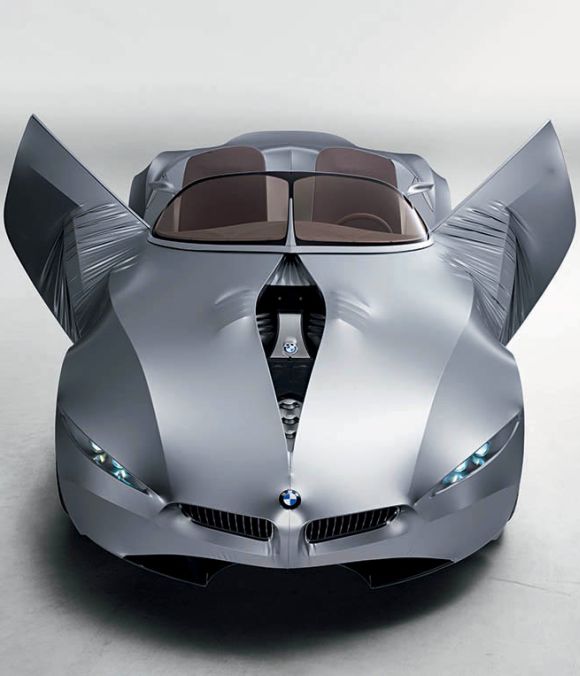
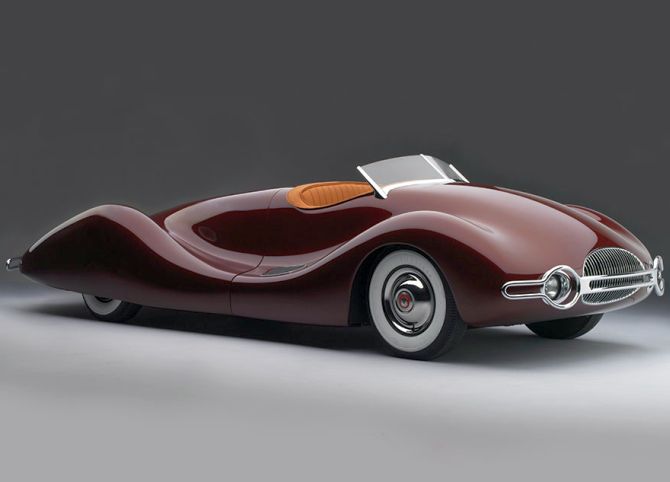
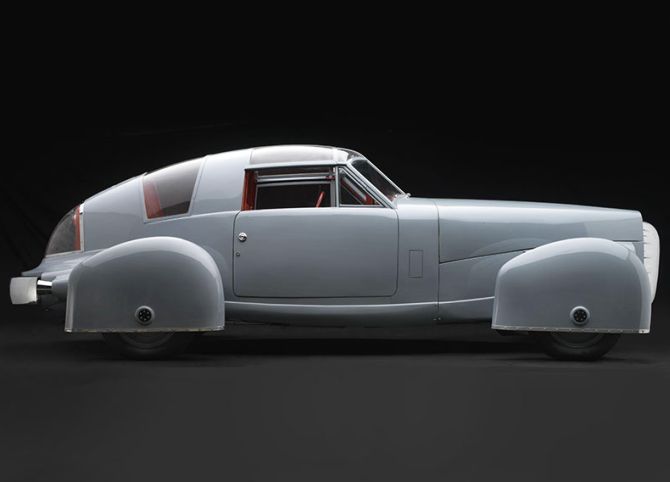
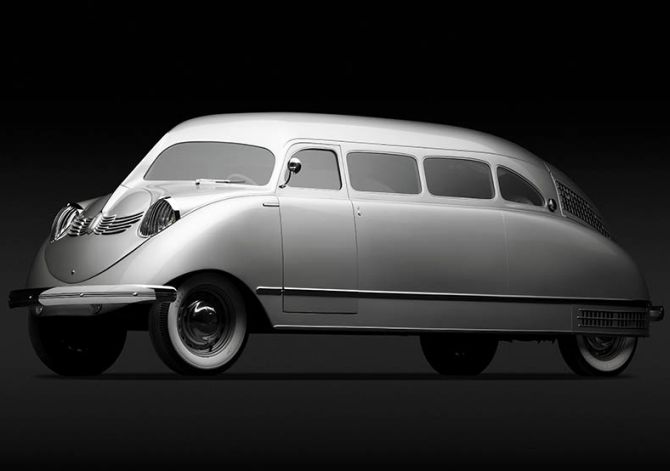

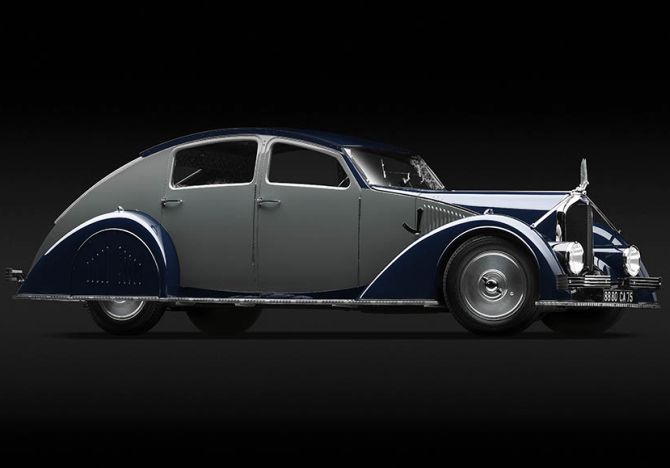

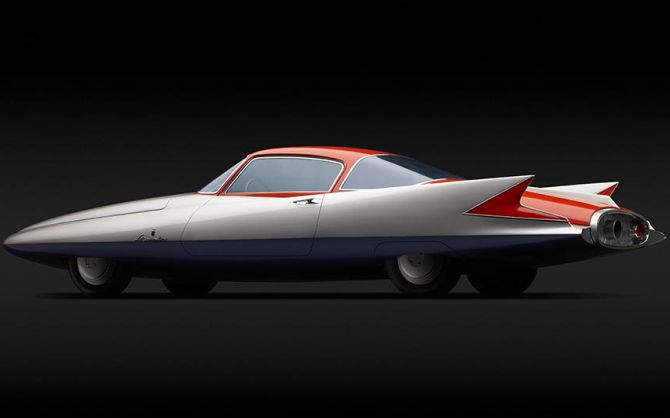

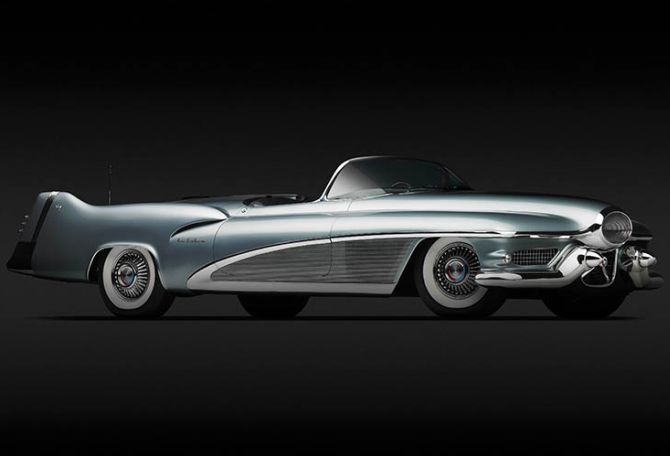
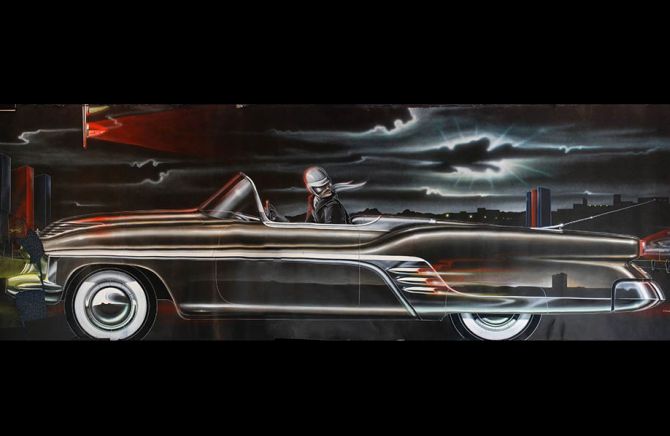

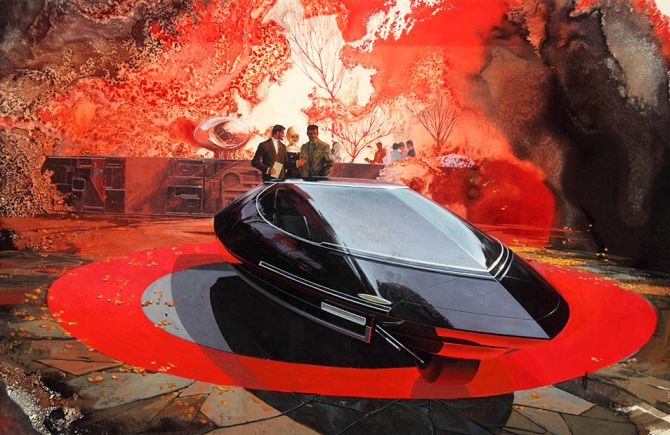
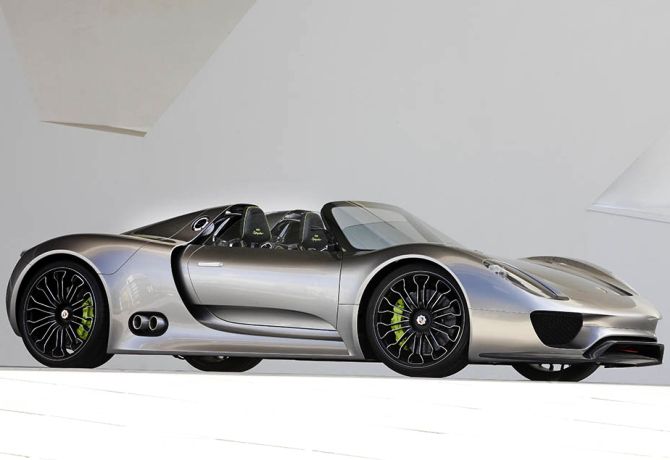

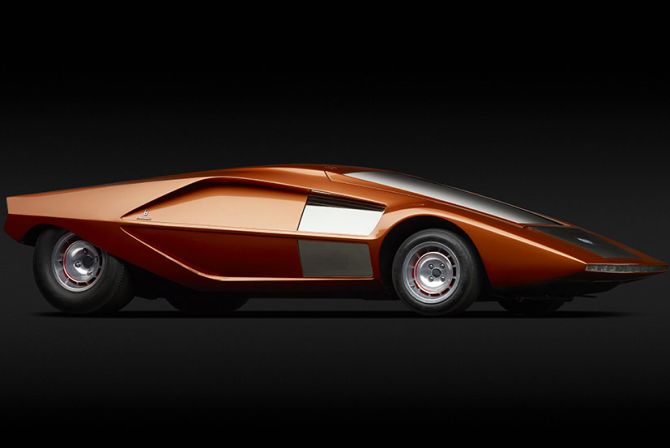
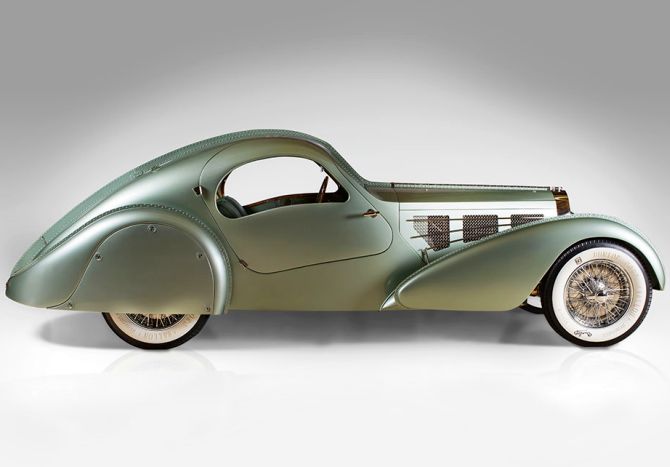
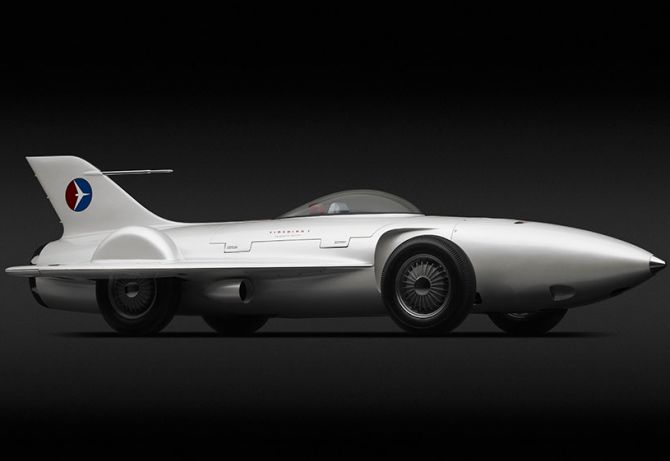
article